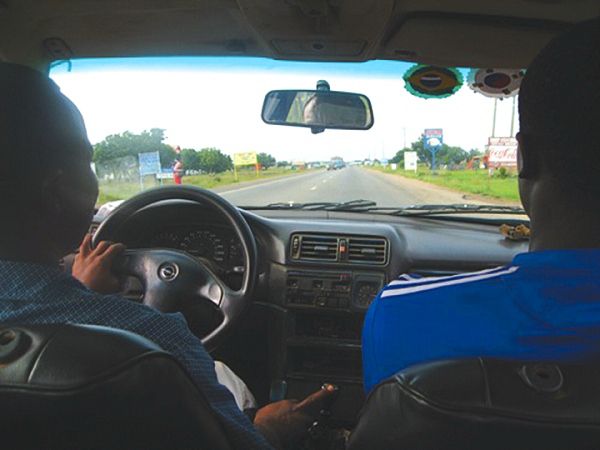
The Law on ‘Work and Pay’
“Work and pay” is a descriptive terminology of Ghanaians that refers to a contractual relationship between a driver, who drives a vehicle with an intent to buy it, and that of the vehicle owner, who is also desirous of selling his vehicle.
There is no law by such designation. What we have is the Hire-Purchase Decree, 1974 (NRCD 292), which governs such contracts.
Advertisement
In this article, I shall attempt to enlighten vehicle owners and drivers on what the law expects of them when the owners intend to sell their vehicle and the drivers also desire to buy them.
In Kwarteng v Sei (1966) GLR 42-50, Djabanor J described “Work and Pay” thus:
‘In effect this is a system by which the owner of the vehicle gives the vehicle over to another, usually a driver, on the understanding that the latter works with the vehicle by driving it for hire by passengers or their goods or both and pays the earnings or a greater portion of them to the owner until the agreed price has been paid after which… the vehicle is properly transferred to the driver.
1. The owner and the driver must make a simple agreement in writing. The full names of the parties, their house addresses, and the date of the agreement must be stated.
Secondly, the purchase price of the vehicle must be known, and the weekly or monthly payments to be made against its purchase stated, and the time within which payment should be completed. It is proper for the agreement to be witnessed by two persons: one for the seller, and another for the buyer.
At the bottom of this simple agreement, they could state as follows: The “work and pay” agreement here shall be governed by the Hire-Purchase Decree, 1974 (NRCD 292).
What this means is that the Hire Purchase Decree shall be applied when an act of bad faith, by either of the parties, ends up in court.
2. The vehicle to be used by the driver must be in a perfect state, and not one that would entail constant repairs. It is not advisable for a driver to give in to a suggestion to “work and pay” when the vehicle is not new or about new.
3. During the contract, it is the owner’s duty to pay for the insurance, roadworthy certificate, and pay all due taxes.
4. Once the agreement begins to run, the driver must not do the following:
• Give the vehicle to a “spare” driver to use
• Use the vehicle in any unlawful or criminal act
• Park the vehicle at a workshop for repairs for unduly long time
5. At any time while the agreement is active, the driver can terminate the agreement. He must, however, give written notice to the owner before terminating the agreement. Thereupon, he must return the vehicle in good working condition. If the driver has paid the owner GH¢20,000.00 out of the sale price of GH¢30,000.00, the driver must pay half of the outstanding amount to the owner; that is half of GH¢10,000.00: GH¢5000.00.
6. Notwithstanding the contract, a driver could pay upfront the whole purchase price and own the vehicle.
7. It is not in the power of the vehicle owner to terminate the agreement by seizing the vehicle, or, in the Ghanaian parlance, asking the driver to “park the car”! No! More so when the driver has paid more than half of the purchase price, and has not committed any wrongdoing to invite such seizure of the vehicle.
Where the owner terminates an agreement for no good reason, the driver could take an action in court for the recovery of money due him under the agreement.
8. Where a driver mishandles a vehicle, the owner must tell him in writing, or in the presence of a witness, to put things right.
After 14 days, when the driver fails to put things right, the owner could terminate the agreement, take back his vehicle, and an account made and payments settled. Where the driver has paid for more than half the purchase price, the owner can terminate the agreement and take back the vehicle only on the orders of the court.
9. The owner must give receipts for all payments made by the driver. Where payments are made directly into the owner’s bank account, a bank statement of payments made must be given the driver. Where the owner fails to give receipts, the driver must stop payments to him till he fulfils the law.
If the owner terminates the agreement because he is dubious, the driver could take him to court.
10. On full payment for the vehicle, the owner must transfer the vehicle into the name of the driver.
Kwarteng v Sei (1966) GLR 42-50 says that where a vehicle is given to a driver to purchase on ”work and pay” basis, the vehicle is actually under the control of the owner, till the driver has completed payments for the vehicle.
In this case, the driver drove carelessly and hurt a passenger.
The passenger sued the driver and the owner of the vehicle. The court held that the owner was vicariously responsible for the negligence of the driver, who was his agent.
It was because the driver was still paying for the vehicle.
Writer’s email: [email protected]



